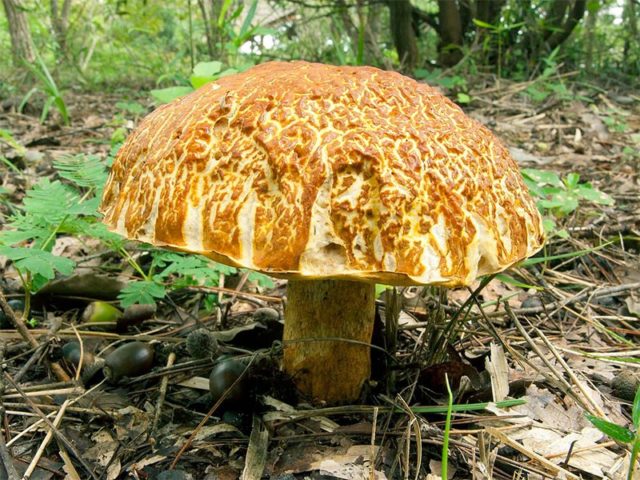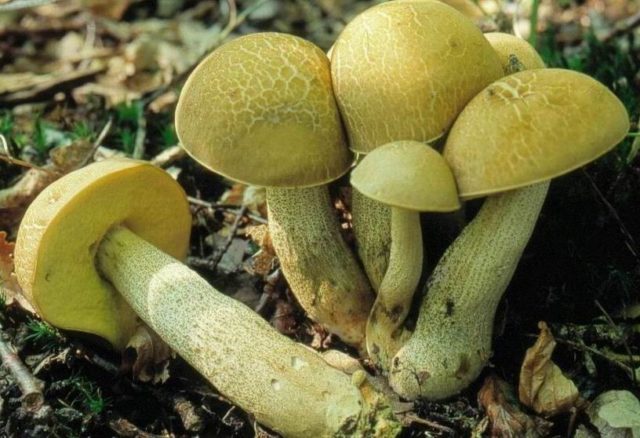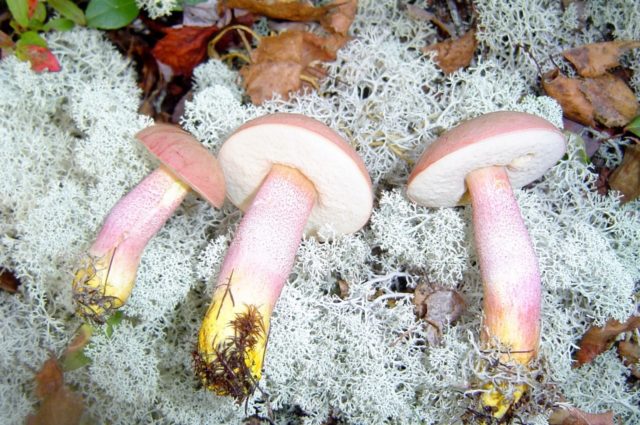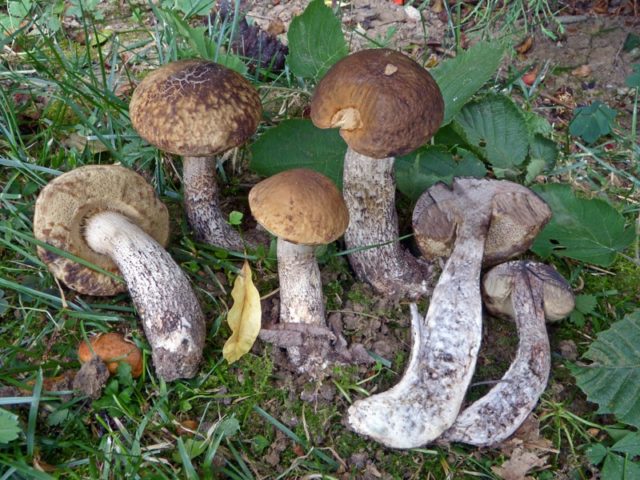Content
Far Eastern gum is an edible tubular mushroom of the Boletovye family, of the genus Rugiboletus. Differs in very large size, strongly wrinkled, cracking, variegated surface, absence of worms and excellent taste characteristics. The name of the boletus unites boletus and aspen mushrooms.
What does the Far Eastern pebble look like?
The cap is first spherical, then pillow-shaped, convex. The color is brown, becoming ocher-yellow in the process of growth. On the surface there are radial wrinkles, along the edge - the remnants of the bedspread. The skin is brownish, bumpy, wrinkled, cracked in dry weather. The size of the cap is up to 25 cm in diameter.
The leg is ocher color, cylindrical, solid, rough, covered with small brownish scales. Height - about 13 cm, diameter - 2-3.5 cm.
Young mushrooms have dense flesh, old ones - loose. The color is off-white, pinkish on the cut.
The tubular layer is yellow in young specimens, and olive yellow in old specimens. The tubules next to the leg are dented. Spores are pale brown, fusiform.
According to mushroom pickers, the Far Eastern limb is very tasty
Where does the Far Eastern mushroom grow
Distributed in the south of Primorsky Krai. It is found in oak forests, grows in groups, rarely singly. In fruitful years, it bears fruit abundantly.
Growth period of the Far Eastern stump
Fruiting period - late summer - early autumn (August to September). It grows very quickly - by about 4 cm per day, significantly gains during this time in weight - by 10 g. After three days it becomes a strong mushroom, after a week - old, unsuitable for food.
Is it possible to eat Far Eastern limbs
Considered edible. It is edible, tastes good and smells good.
Mushroom taste
Belongs to the second category. It has a pleasant taste and smell.
Benefits and harm to the body
Used in folk medicine. It has long been endowed with healing properties. It is believed that the Far Eastern prunus normalizes blood sugar levels, helps with kidney and neurological diseases. It is low in calories and contains many nutrients. It contains ascorbic acid, vitamins B and E, phosphorus, iron, potassium, sodium, magnesium, fatty acids. Well suited as a dietary meal.
Like all mushrooms, the Far Eastern limb is a heavy food for digestion. It is not recommended to use it for gastrointestinal diseases. In addition, it can cause an allergic reaction.
False doubles
The Far Eastern limb is easy to distinguish from its relatives by such a specific feature as a variegated hat. Several similar species can be distinguished.
Blackening or checkerboard... The main differences are - it grows in Europe and the Caucasus, forms mycorrhiza with oak and beech, has a yellowish color, turns pink at a break, then turns black.The hat is massive, up to 15 cm in diameter. The surface is smooth, dry, often cracking. The leg is thick, fleshy, cylindrical, sometimes thickened at the bottom, yellowish, brown, with orange scales. Height - about 12 cm, thickness - 3 cm. Fruiting from the beginning of summer until the first frost. Blackening gum is an edible mushroom belonging to the second category.
Blackened limbs are recognized by their yellow color
Boletus (obabok) painted-legged... It features a pink cap and a yellow leg with reddish scales. In addition to the Far East, it grows in the Siberian region. The cap is pillow-shaped, with a straight or wavy edge. The color is uneven, with yellow, olive and lilac blotches. The tubular layer is first pale pink, then brown or chestnut. The pulp is white, with a slight mushroom odor.
The mushroom is medium in size. The diameter of the cap is from 3 to 11 cm. The height of the leg is from 8 to 12 m. Colored-footed chunks are considered edible and belongs to the second taste category. It is rarely eaten due to the lack of a pronounced mushroom taste and the pulp that darkens during heat treatment.
The colored-legged boletus is characterized by a pinkish color.
Boletus gray (hornbeam)... Important distinguishing features are a grayish color, the surface of the cap is not cracked. The fungus is more widespread, in the Russian Federation it is found mainly in the Caucasus. Grows in deciduous forests, where there are hornbeams, less often found under birches, hazel, poplar. The hat is at first hemispherical, with the edges bent inward, then it becomes pillow-shaped. Diameter - from 7 to 14 cm. The surface is velvety to the touch, wrinkled. Usually dry and matte, in rainy weather - glossy. The cap is grayish-brownish or brownish with a greenish tint. The leg is cylindrical, sometimes thickened at the bottom. Height - from 5 to 13 cm, diameter - about 4 cm. The color is greenish-gray at the top, brown at the bottom. The pulp is white, fibrous, in older specimens it is tough, lilac on the cut, becomes grayish with age, then dark gray.
The porous layer is whitish or grayish with a sandy tint. The tubules are narrow, soft, watery, and the pores are very small. It belongs to the edible species, is suitable for any type of processing, it is stored worse than other boletus mushrooms due to the less dense pulp.
The grabovik has a grayish color
Use
Far Eastern obobok is suitable for any processing methods. It is boiled, fried, stewed, dried, made a powder for broths and seasonings. They cook soups with him, bake pies. It is recommended to boil it in two waters for 45 minutes.
It has one property: its leg turns black during heat treatment. Therefore, for cooking, it is recommended to use only hats that do not darken during cooking, but in the marinade acquire a bright yellow color. The legs can be boiled separately, then added to soups or sauces.
Conclusion
Far Eastern obobok is considered one of the best mushrooms, despite the fact that it is customary to refer it to the second category. Experts say that it is superior in quality to white. This is one of the most widespread and collected species in the Far East.












